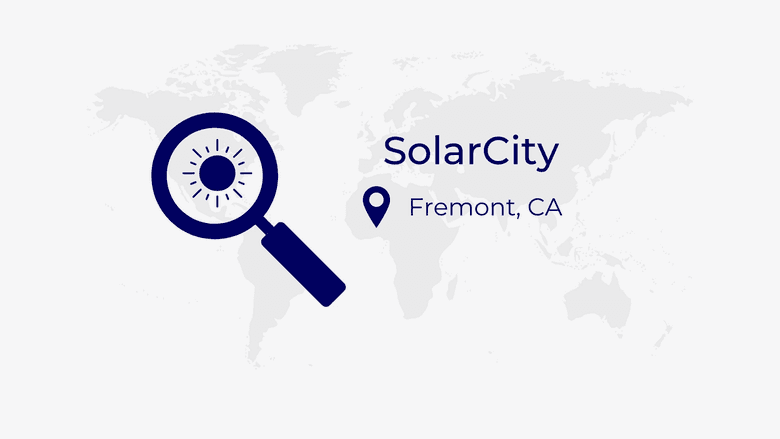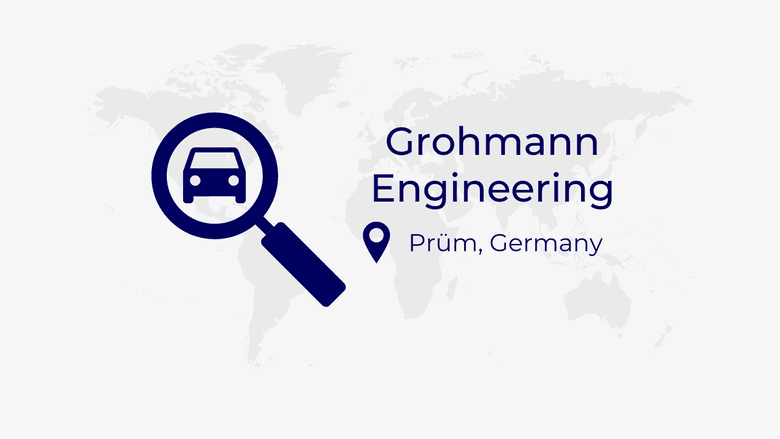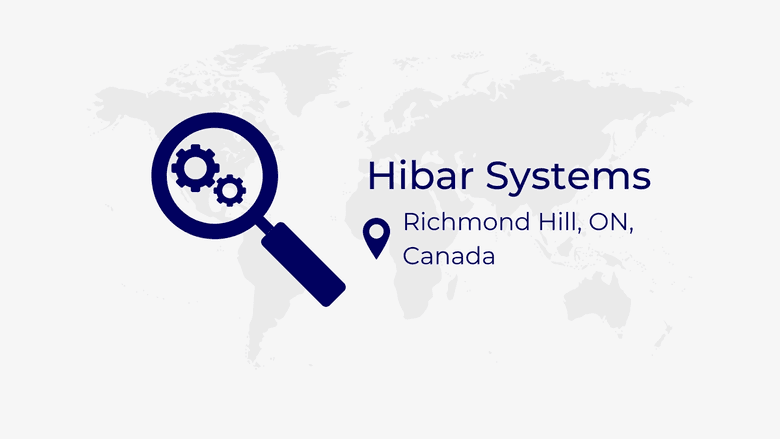While Tesla CEO Elon Musk is acclaimed for launching several successful ventures, like PayPal and SpaceX, he also has a knack for finding promising companies to add to his collection. In fact, he started his involvement in Tesla Motors (now Tesla, Inc.) with an early investment in 2004. As the company developed, Musk took on a bigger role, overseeing design of the Roadster and leading subsequent funding rounds. He later assumed the position of CEO in 2008. In recent years, Musk has continued to scope out new startups and firms to adopt-- not for himself, but for his breakout electric car company.
Tesla has had an eventful year, with stock (TSLA) skyrocketing from $88 in January 2020 to over $800 today. The company posted its first profitable year, reporting a profit of $721 million for the fiscal year 2020 and holding 18% of the global market share as of October. It officially joined the S&P 500 index on December 21, 2020, and its market capitalization now stands at over $800 billion. This makes Tesla the most valuable automaker in the world and puts it close to the league of technology giants like Apple and Amazon.
While this success can be attributed to several factors, its subsidiaries definitely played a role in propelling the company to where it is today. Here are some of the most interesting acquisitions Tesla has made in the last few years.
1. SolarCity

Industry: Energy production
Acquisition date: November 2016
Acquisition price: $2.6 billion
SolarCity is a solar energy production company founded in July 2006 by brothers Peter and Lyndon Rive at the suggestion of their cousin Elon Musk, who also helped them start the venture. As the name suggests, SolarCity develops and installs solar power technology. The enactment of the solar tax credit in 2006 boosted demand, and in 2013, SolarCity was the leading residential solar installer in the US. It went public in 2012 at about $8 per share. Before merging with Tesla, SolarCity made a few of its own acquisitions, including the solar sales and marketing firm Paramount Solar, the solar division of Clean Currents, and several others.
In 2015, Tesla unveiled the Powerwall, a home battery designed to store solar energy for later use. Tesla didn’t have a field-services team at the time, so Elon Musk knew that customers would have to rely on a local installation service and another solar provider to connect the system to solar. In order to avoid making customers jump through hoops, he decided to integrate with a solar company to bundle the products in services. He called his cousin in February 2016 to talk about merging Tesla and SolarCity. Soon after, the two companies created the Solar Roof, an energy generation system with solar panels that resemble shingles, and unveiled it during demos at Universal Studios in early December of 2016. SolarCity now manufactures solar technology out of Gigafactory 2 (or Tesla Giga New York) in Buffalo, New York.
This merger created the world’s only vertically integrated sustainable energy company at the time. Now, Tesla Solar offers an assortment of residential solar products including the Solar Roof, the Powerwall home battery backup, and the Tesla Solar Inverter to convert DC power from solar to AC power. However, Tesla’s acquisition of SolarCity created some controversy and speculations of a conflict of interest, as Musk was the chairman of both companies. While Musk recused himself of voting on the deal in the end, the transaction still spurred a shareholder lawsuit. Plaintiffs cited SolarCity’s financial hardships from around the time of the acquisition to claim that Tesla had overpaid for a company that was nearly worthless. The lawsuit was settled for $60 million in January 2020.
2. Grohmann Engineering

Industry: Engineering
Acquisition date: January 2017
Acquisition price: $135.3 million ($109.5 million initially, plus an additional $25.8 million for a new incentive compensation agreement)
Grohmann Engineering was a German engineering automation company founded in 1963 by Klaus Grohmann. It developed production lines for key parts of the car, including machinery for the production of microprocessors and memory chips, airbag sensors and power steering controllers, systems for the production of car door and roof seals, and Lithium-ion battery cells and modules. Tesla decided to buy the automation company in an effort to ramp up electric car production.
Shortly after the acquisition, the founder Klaus Grohmann was ousted from the company. Sources say that he had a disagreement with Elon Musk about how to deal with legacy clients like BMW and Daimler (the parent company of Mercedes Benz), as Musk wanted the firm to focus its attention and resources solely on Tesla. After Grohmann left, his employees were concerned about the future of the company. In order to reassure their new team, Tesla offered Tesla Grohmann Automation workers incentive packages that included one-time bonuses, stock options, and 5-year job guarantee. Later on, the company also agreed to a new compensation structure. Now the division manufactures robotics used in the battery and electronics production for Tesla under the umbrella of Tesla Automation.
3. Maxwell Technologies

Industry: Energy storage
Acquisition date: May 2019
Acquisition price: $207 million
Founded in 1965 under the name Maxwell Laboratories, Inc., Maxwell Technologies started out as a government contractor, providing R&D services in fields like advanced physics and space effects analysis. The company later started focusing on commercial products in the early 1990s and gained all of its revenue from commercial sources in 2014. Its product offerings include energy storage products like ultracapacitors and power modules.
These products looked like a good fit for Tesla, and Elon Musk personally, as he originally came to California in hopes of pursuing a PhD at Stanford studying ultracapacitors. However, many speculate that Tesla valued Maxwell more for its dry electrode technology, which is meant to help batteries pack in more energy while cutting costs by up to 20%. Maxwell’s process makes the electrodes thicker than conventional practices, allowing them to store more energy. Therefore, gaining access to this new energy storage system likely allowed Tesla to cut costs while producing at a rate to meet vehicle sales demand and maintain profitability.
4. DeepScale

Industry: Artificial intelligence
Acquisition date: October 2019
Acquisition price: Not disclosed
DeepScale was founded outside Palo Alto in September 2015 by two computer scientists. They worked together at UC Berkeley on a project to make deep neural networks more efficient. The founders also worked with a team to build SqueezeNet, a company that aimed to create a smaller neural network with fewer parameters that could fit more easily into computer memory and be transmitted over a computer network.
While DeepScale uses similar deep learning technology, the company geared itself more toward the car industry from the start. According to an article in Forbes, the company identified as a team of “developers of perceptual systems for semi-autonomous and autonomous vehicles, focusing on low-wattage processors used in mass-market automotive crash avoidance systems to power more accurate perception.” DeepScale’s work seemed to fit well with the electric car maker’s goal of creating fully driverless vehicles, and it was likely acquired as a key piece of technology to integrate into Tesla’s Autopilot, as well as its robotaxis in the future.
5. Hibar Systems

Industry: Manufacturing
Acquisition date: Between July and October 2019
Acquisition price: Not disclosed
Founded in 1974, Hibar Systems is a Canadian manufacturer of automated liquid dispensing and filling systems. While it’s headquartered in Richmond Hill, the company also operates out of facilities in China and Germany. In April 2019, Hibar got a $2 million grant from the National Research Council of Canada to help develop Lithium-ion battery manufacturing systems. The company’s battery cell production expertise is likely what caught Tesla’s attention, as the auto manufacturer was trying to develop its own battery cells to lower costs, improve quality, and cut down on its dependence on Panasonic. This could continue to be a valuable asset for Tesla in the long term, as Musk has reported difficulties with maintaining enough battery cell inventory to keep up with car production. On the Q4 2020 company earnings call, Musk said that they couldn’t start production on the Tesla Semi only because they didn’t have enough battery cells.
Hibar Systems was one of Tesla’s more quiet acquisitions. The electric vehicle maker didn’t make a formal announcement, but observers noticed that Hibar Systems wasn’t on Tesla’s subsidiary list in July but was added in early October. Therefore, they deduced that the acquisition must have been completed somewhere in that time frame.
What’s next?
Tesla’s success means that the automaker is doing something right, but it also means it has a busy year coming up. Since the start of 2021, it’s made a handful of newsworthy headlines, including expanding its reach to India by opening a facility in Bengaluru and hiring three directors-- including Vaibhav Taneja, who joined Tesla through the SolarCity acquisition. It’s also in the middle of producing new vehicles like the Model S and Model X to be sold in the spring, as well the Cybertruck to be sold in the later part of this year. On top of that, Tesla has to deal with questioning from Beijing’s regulatory agencies regarding the quality of its Shanghai-made Model 3s, while simultaneously protecting its relationship with the government of the world’s largest car market. With these and other hefty tasks on its plate, it wouldn’t be surprising if Tesla has more acquisitions to come in the next year.
👉 Read Next: What's it like working for Tesla?
The information provided herein is for general informational purposes only and is not intended to provide tax, legal, or investment advice and should not be construed as an offer to sell, a solicitation of an offer to buy, or a recommendation of any security by Candor, its employees and affiliates, or any third-party. Any expressions of opinion or assumptions are for illustrative purposes only and are subject to change without notice. Past performance is not a guarantee of future results and the opinions presented herein should not be viewed as an indicator of future performance. Investing in securities involves risk. Loss of principal is possible.
Third-party data has been obtained from sources we believe to be reliable; however, its accuracy, completeness, or reliability cannot be guaranteed. Candor does not receive compensation to promote or discuss any particular Company; however, Candor, its employees and affiliates, and/or its clients may hold positions in securities of the Companies discussed.
